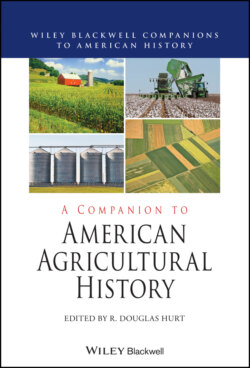Читать книгу A Companion to American Agricultural History - Группа авторов - Страница 21
Conclusions
ОглавлениеEfforts to understand the causes and consequences of agricultural transitions benefit from detailed knowledge of individual regional histories, and North America offers at least two well-studied examples. In the Southwest, the earliest food producers were forager-farmers who first adopted maize and eventually incorporated numerous additional crops. Hohokam farmers and their neighbors in southern and central Arizona domesticated local agaves, which they cultivated in extensive rockpile fields, and they built and maintained some of the largest irrigation networks in the New World. They and Ancestral Pueblo farmers on the Colorado Plateau and Rio Grande valley employed many smaller-scale types of water, temperature, and soil management strategies to support substantial populations in areas where modern mainstream agriculture is marginally successful at best.
Recognition of eastern North America as an independent center of plant domestication increases the number of regions in the world where these transitions occurred. Only a few pre-maize, Eastern Agricultural Complex crops survived until European contact, but the lost crops are of increasing interest to scholars, chefs, and other Americans seeking alternatives to industrial agricultural regimes. Redomestication of the eastern chenopod, in particular, holds promise as a possible local alternative to its Andean cousin, quinoa.
Native American women and men combined food from fields and gardens with plants and animals harvested and hunted in the forests, grasslands, and/or arid hinterlands surrounding their settlements. The “uncultivated” zones were often managed to increase the productivity of game animals, nuts, fruits, and resources needed for baskets, textiles, and medicines. Pacific Northwest peoples engineered elaborate tidal gardens for plants bearing starchy underground organs, and they maintained meadow-like zones where camas, balsamroot, and other root foods were harvested in volumes far outstripping anything attainable in unmodified areas.
Perceived superiority of grains domesticated in Southwest Asia and the supposed higher productivity of plow technology set a false standard against which Native American agriculture was, and still is, judged. As Doolittle (2000) and Mt. Pleasant (2015) have shown, prejudiced eyes and pens of land-hungry European Americans were blind and silent to the degree of permanence, effectiveness, efficiency, and sustainability of food production systems practiced by Native peoples whose territories the newcomers coveted. Fortunately, members of First Nations communities in Canada and their Indigenous counterparts in the United States still actively learn, teach, and implement what Lyons and Ritchie (2017) describe as “ancient practices of land tenure, resource management and ownership, healing and identity, inter-regional alliances, gender roles, ceremonial foods, and traditional cooking techniques.”
Across the North American continent, Indigenous food producers raised enough crops to sustain densely settled communities, complex political and ritual institutions, long-distance trading networks, and magnificent art and architecture. Farmers in both the Southwest and eastern North America bred diverse landraces of maize and other crops adapted to local climatic and edaphic conditions, with relevant genetic legacies for today’s agricultural economy. Early observers from the Old World may not have been impressed by the relatively simple tools, cooperative methods of organizing labor, small-scale water control mechanisms, non-plow tilling, unfamiliar crops, and polyculture strategies, but Native North American agricultural systems stand as models of energy-efficient food production that might serve to ensure the survival of future generations.
